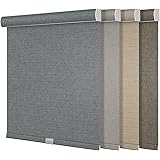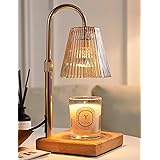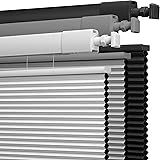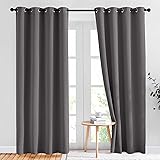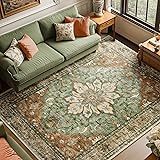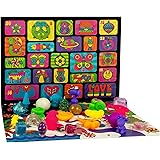The landscape of interior design is perpetually evolving, and the living room, often considered the heart of the home, is no exception. As briefly highlighted in the accompanying video, Living Room Design Trends 2025 are poised to emphasize a harmonious blend of comfort and style, predominantly featuring modular furniture and an increased integration of natural materials. This article delves deeper into these burgeoning aesthetics and offers a comprehensive guide to curating a contemporary and inviting living space for the coming year.
The Ascendancy of Modular Furniture: A New Paradigm for Adaptability
Modular furniture systems are being identified as a cornerstone of modern living room design for 2025. These adaptable pieces are akin to sophisticated building blocks, allowing homeowners unparalleled flexibility in configuring their spaces. Traditionally, a sofa might be a fixed entity; however, modular designs offer individual components—such as armless chairs, chaises, and ottomans—that can be rearranged to suit varying needs and spatial constraints.
In essence, a single modular sofa can be transformed from a sprawling L-shape perfect for entertaining to a more intimate two-seater with an accompanying chaise lounge for relaxation. This versatility is particularly advantageous in urban environments where space optimization is paramount. Furthermore, the inherent adaptability of modular units contributes to their longevity; as life circumstances change, so too can the furniture arrangement, thereby reducing the need for complete replacements. Such systems are not merely practical; they also offer an aesthetic that is both sleek and highly functional, aligning perfectly with a minimalist yet comfortable ethos.
Benefits of Integrating Modular Elements
- Unmatched Flexibility: Layouts can be effortlessly modified for different occasions or to refresh the room’s dynamic.
- Space Efficiency: Components can be optimized for small or awkwardly shaped rooms, preventing wasted space.
- Personalization: Various fabrics, colors, and configurations enable a truly bespoke design tailored to individual tastes.
- Investment Longevity: Pieces can be added or removed over time, extending the lifespan of the furniture collection.
Embracing Natural Materials: A Return to Organic Serenity
Another prominent trend influencing Living Room Trends 2025 is the significant resurgence of natural materials. This movement is being driven by an increasing desire for connection with the natural world, often referred to as biophilic design, and a heightened awareness of environmental sustainability. The incorporation of elements derived from nature is known to foster a sense of calm and well-being, transforming living rooms into serene sanctuaries.
Materials such as untreated wood, artisanal stone, woven jute, breathable linen, and soft wool are being favored for their authentic textures and inherent warmth. Consider, for instance, a living room where a robust wooden coffee table serves as a central anchor, complemented by a soft linen-covered sofa and an area rug crafted from sisal or wool. These components work in concert to create an environment that feels both grounded and luxuriously organic. Furthermore, the imperfections found in natural materials are not merely tolerated; they are celebrated, adding character and a unique narrative to each piece.
Key Natural Materials to Consider
- Wood: Light oak, walnut, or reclaimed wood for furniture, flooring, and decorative accents.
- Stone: Travertine, marble, or granite for tabletops, fireplaces, or subtle decorative elements.
- Woven Fibers: Rattan, cane, jute, and sisal for chairs, baskets, and rugs, adding textural interest.
- Natural Textiles: Linen, cotton, wool, and hemp for upholstery, cushions, and throws, emphasizing comfort and breathability.
The Pursuit of Comfort: More Than Just Plush Seating
While often assumed, comfort is being redefined in 2025, extending beyond mere plushness. The concept of comfort encompasses an holistic sensory experience that contributes to overall well-being. This involves a thoughtful consideration of ergonomics, lighting, acoustics, and the strategic layering of textiles.
Seating, for example, is not only being designed to be soft but also to provide proper support, allowing for extended periods of relaxation without discomfort. The lighting scheme within a living room is being carefully curated to offer flexibility, transitioning from bright, task-oriented illumination to soft, ambient glow suitable for unwinding. Furthermore, the tactile experience is being enriched through the layering of various textures—think of a velvet cushion placed upon a linen sofa, adorned with a chunky knit throw. Such combinations engage the senses, inviting occupants to truly relax and feel at ease within their personal space. Therefore, comfort is envisioned as a multifaceted attribute, central to the design philosophy of 2025.
Cultivating Style: Understated Elegance and Personal Expression
The notion of style for 2025 living rooms is being characterized by an understated elegance, moving away from overtly flashy or trend-driven decor. Instead, there is a distinct shift towards curated spaces that reflect personal narratives and a sense of quiet luxury. This aesthetic is achieved through thoughtful selection rather than excessive ornamentation.
Consider the stylistic parallels between a well-composed painting, where every brushstroke serves a purpose, and a meticulously designed living room. Each piece of furniture, every decorative object, and the chosen color palette are intended to contribute to a cohesive and tranquil visual story. Color schemes are being kept relatively neutral, featuring earthy tones, muted greens, and warm grays, which serve as a calming backdrop for natural materials and personal touches. Accent colors, when introduced, are typically subtle and saturated, providing visual interest without overpowering the serene atmosphere. Consequently, the stylistic direction for 2025 is being defined by a refined simplicity that speaks volumes through quality and intentionality.
Integrating Sustainability and Biophilic Design
In addition to modular furniture and natural materials, the broader principles of sustainability and biophilic design are profoundly influencing Living Room Design Trends 2025. Sustainability involves making environmentally conscious choices, from the sourcing of furniture to the selection of finishes. This could mean opting for furniture crafted from recycled materials, choosing paints with low volatile organic compounds (VOCs), or investing in pieces made by artisans using ethical labor practices. The ethos is one of conscious consumption, where design choices reflect a respect for the planet.
Biophilic design, on the other hand, centers on connecting occupants with nature. This is achieved through various means, including ample natural light, the strategic placement of indoor plants, and the use of natural patterns and forms. A living room designed with biophilic principles might feature large windows that frame an outdoor view, a collection of diverse houseplants that purify the air and add vibrancy, or textiles with botanical prints. The objective is to blur the lines between indoor and outdoor environments, thereby fostering a greater sense of peace and vitality within the home.
Functionality Meets Aesthetics: The Rise of Multifunctional Spaces
Contemporary living often necessitates spaces that can serve multiple purposes. Consequently, multifunctional furniture and the intelligent zoning of living rooms are being recognized as crucial aspects of 2025 design. For instance, a coffee table might also contain hidden storage, or a console table could double as a desk for occasional work-from-home tasks. This approach is not merely about saving space; it is about maximizing the utility of every square foot, ensuring that the living room can adapt to a range of activities throughout the day.
Consider a living room where distinct zones are created, perhaps a reading nook delineated by an armchair and a floor lamp, or a casual dining area established near a window. Such divisions, often subtle, allow for various activities to occur concurrently without compromising the overall harmony of the space. Therefore, the design philosophy for 2025 living rooms underscores a sophisticated integration of form and function, where every element is selected for its aesthetic appeal as well as its practical contribution.
The forthcoming Living Room Design Trends 2025 are clearly signaling a shift towards environments that prioritize well-being, adaptability, and a thoughtful connection to the natural world. By embracing modularity, integrating natural materials, and focusing on a holistic sense of comfort and understated style, homeowners are afforded the opportunity to create living spaces that are both exquisitely current and deeply personal.


